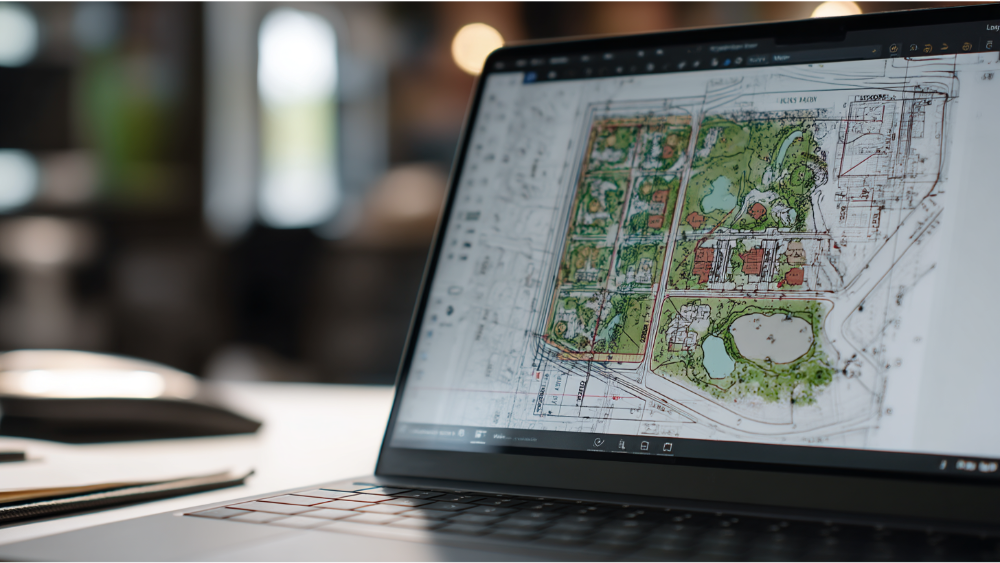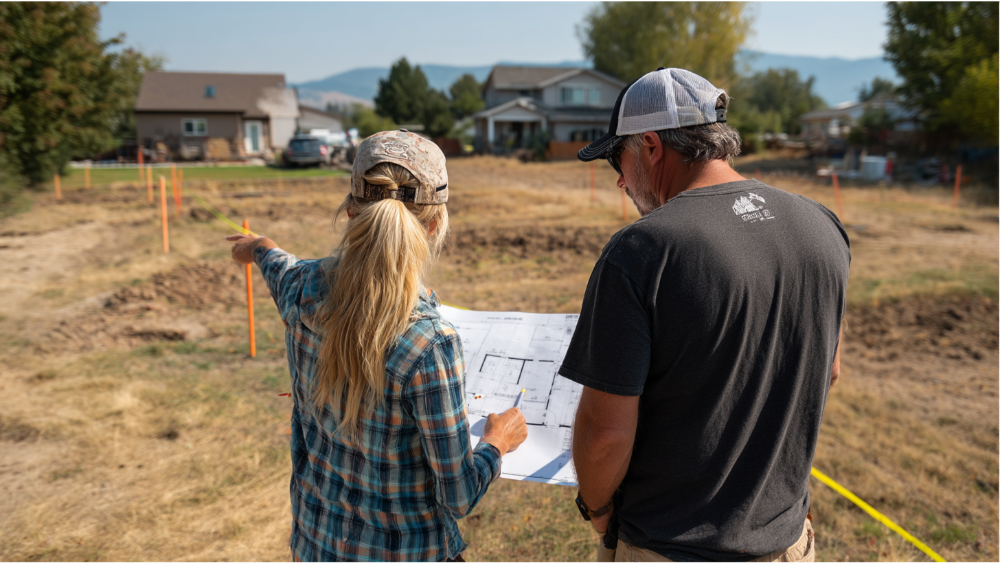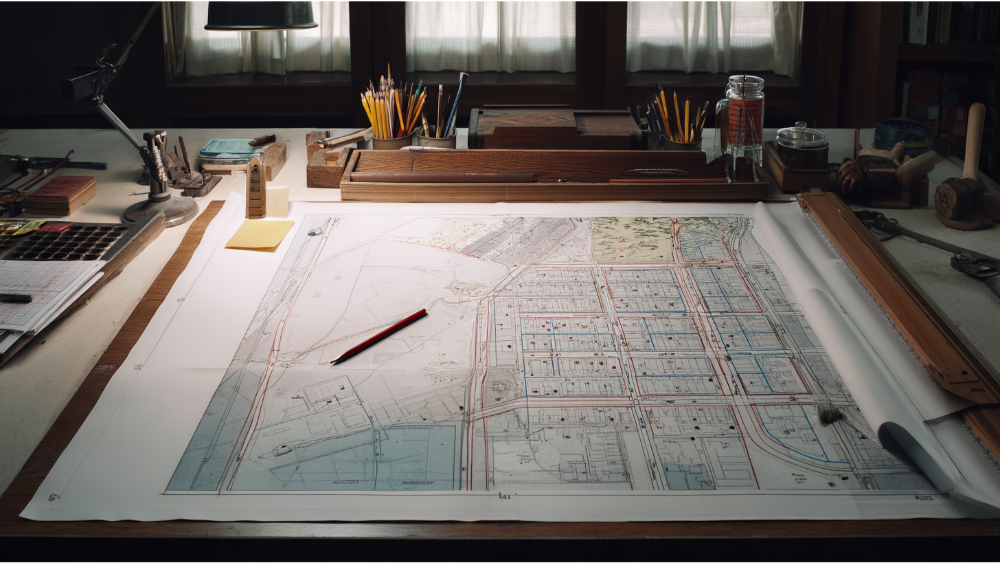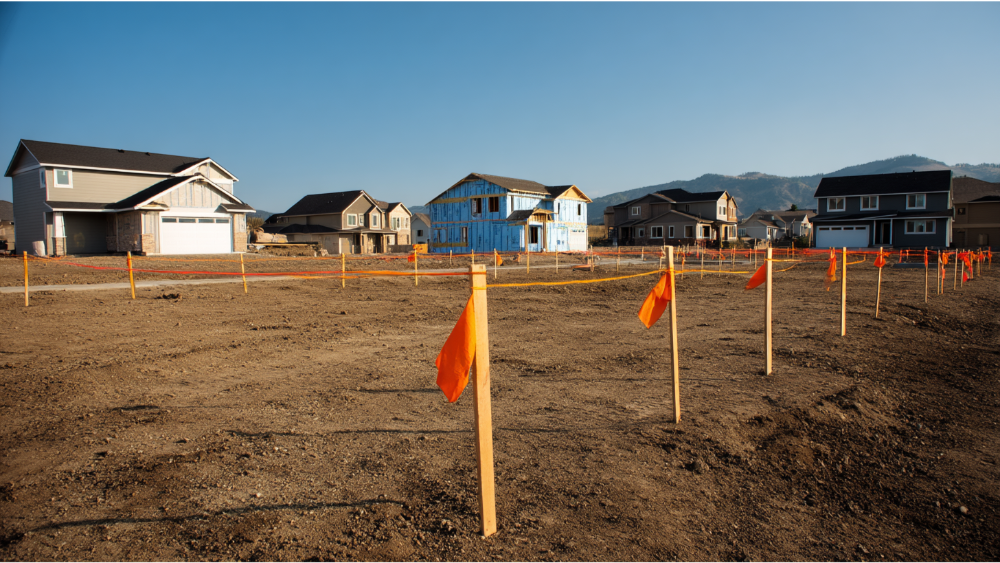Partnered with #1 ADU Builders
Contact Golden State
Drop us a line! We look forward to discussing your next project with you!
Cut the chase! Schedule a face-to-face virtual meeting with us today to dive into your project's next steps.
For our returning clients, experience our streamlined, contact-free project proposal process. Simply fill out our short project questionnaire, and we'll deliver your project proposal within 72 hours.
Contact Us:
Follow Us:

- Golden State Design & Engineering
- Comment 0
What Is a Plot Plan and Why Does Your Project Need One?
When preparing for a construction project in California, whether you’re planning a new building, an accessory dwelling unit (ADU), a pool, or even a home addition, one essential document stands between you and your building permit: a plot plan. This scaled drawing offers a clear, accurate representation of your property, existing structures, and proposed work, providing both visual clarity and regulatory compliance. In this comprehensive overview, we’ll explain what a plot plan is, why you need one, and how it supports proper planning, construction, and permitting for California property owners.
What Is a Plot Plan and Why Does Your Project Need One?
A plot plan is a scaled drawing that shows the layout of a parcel of land, including property boundaries, property lines, existing structures, proposed structures, utility lines, access points, and site boundaries. Plot plans are often required as part of a building permit application to confirm that the proposed construction complies with local zoning laws, building codes, and land use regulations.
An accurate plot plan gives reviewing agencies a clear picture of how a construction project will fit within the legal limits of a property. It also serves legal purposes, such as resolving property disputes, avoiding encroachments, or clarifying legal boundaries. A certified plot plan prepared by a licensed land surveyor or civil engineer may be required for larger or more complex projects.
Why Your Project Needs a Plot Plan

Building Permit Compliance
Many local governments in California require plot plans as part of any building permit application. Without an accurate plot plan, your permit could be delayed or rejected. For construction projects involving additions, garages, fences, decks, or swimming pools, an approved plot plan ensures your work complies with local regulations and avoids costly mistakes.
Zoning Compliance and Approval
Plot plans support zoning approval by verifying setback distances, lot coverage limits, and the location of major structures within your property boundaries. This helps ensure compliance with zoning laws and protects against future legal complications. In areas with strict zoning regulations, a detailed plot plan can be absolutely essential for securing planning approval.
Accurate Representation of the Site
An accurate plot plan provides an accurate representation of your property layout, including dimensions, site boundaries, access points, and locations of utility lines. This level of detail supports the entire process of construction planning, helping contractors understand where to build, dig, or install critical systems without crossing boundary lines or hitting underground infrastructure.
Avoid Property Disputes and Legal Issues
A certified plot plan can help prevent property disputes by clearly showing where your property line ends and a neighbor’s begins. It may also help resolve existing disputes and provide documentation for real estate transactions, legal disputes, or title issues.
Coordination with Utility Companies and Agencies
Utility companies often require accurate plot plans before they approve new electrical connections, sewer tie-ins, or water service. Including overhead lines, access points, and existing utility lines in your plan helps avoid service delays or safety hazards.
Types of Plot Plans

Basic Plot Plans
Used for simple residential improvements like decks, fences, or small sheds. These plans show essential features such as property boundaries, access points, existing structures, and proposed additions. Homeowners may sometimes draw basic plot plans for minor projects if allowed by the local jurisdiction.
Residential Plot Plans
Residential plot plans are more detailed and used for home additions, ADUs, swimming pools, or garages. They typically include accurate property lines, setback measurements, utility locations, and a scaled drawing of the proposed structure. A residential plot plan may also include landscaping details, drainage systems, and traffic flow considerations.
Commercial Plot Plans
Commercial plot plans are used for business and development projects and require more detailed information. These plans must demonstrate compliance with zoning laws, local building codes, and urban planning guidelines. They often include multiple structures, parking layouts, drainage systems, access roads, landscaping features, and electrical connections.
Essential Elements of a Plot Plan
To create a functional and compliant plot plan, you need the following components:
- Scaled drawing showing property boundaries and square footage
- North arrow and drawing scale for orientation
- Legal description or parcel number for legal purposes
- Property lines and setback distances
- Existing structures and proposed structures clearly labeled
- Access points such as driveways, gates, or alleys
- Utility lines including water, sewer, gas, electric, and overhead lines
- Drainage systems and stormwater features
- Landscaping features and hardscape elements
- Topographic contours for sloped properties (if required)
- Title block with project address, date, and preparer’s credentials
An accurate plot plan must clearly show how proposed work fits within property boundaries and complies with local zoning regulations.
When Do You Need a Plot Plan?

For Construction Projects
If you’re building a new home, expanding an existing structure, installing a pool, or adding a detached garage or shed, you need a plot plan. Plot plans are especially important when proposed structures are close to property lines or when grading and drainage modifications are involved.
For Real Estate Transactions
Plot plans are often used in real estate transactions to verify legal boundaries, avoid legal complications, and ensure that improvements like fences, patios, or driveways are located within the parcel. They also help determine whether there is adequate space for future expansions.
For Zoning or Land Use Changes
A detailed plot plan is typically required when seeking a zoning variance or use permit. The plan demonstrates compliance with zoning regulations and helps local planning departments evaluate whether your proposal aligns with the city’s general plan.
For Utility and Drainage Approvals
Many municipalities and utility companies request plot plans showing the locations of existing utility lines, new service connections, and stormwater control systems. A certified plot plan helps facilitate utility approval and avoid costly redesigns or delays.
Who Prepares a Plot Plan?
Homeowners
For small, non-structural projects, some jurisdictions allow homeowners to draw basic plot plans. These are typically hand-drawn to scale and used for minor permit applications like fences or storage facilities.
Professionals
For larger or more complex projects, an accurate plot plan must be prepared by a licensed professional. This includes:
- Land surveyors who map legal boundaries and site features
- Civil engineers who design grading plans, drainage systems, and site improvements
- Architects or designers for building layouts integrated into the plan
Golden State Design & Engineering (GSDE) prepares certified plot plans that meet all local standards for residential and commercial construction.
Common Mistakes to Avoid When Creating a Plot Plan

Creating a plot plan may seem straightforward, but errors can lead to rejected permits, legal disputes, or construction delays. Here are common pitfalls to avoid:
- Using inaccurate or outdated property lines or parcel data
- Omitting essential features like drainage systems or access points
- Failing to account for required setbacks or zoning restrictions
- Drawing plans out of scale or without dimensions
- Submitting basic plot plans when a certified plot plan is required
Avoiding these mistakes ensures your plot plan supports the building permit application and aligns with local regulations.
How GSDE Helps You Get It Right
At Golden State Design & Engineering, we support property owners with comprehensive plot plan services designed to simplify the planning process and avoid costly mistakes.
Accurate Land Surveys
Our licensed land surveyors conduct precise field surveys to verify legal boundaries, topography, and utility locations—ensuring that your plot plan is based on real data.
Certified Plot Plan Preparation
Our team prepares accurate plot plans tailored to your project scope, whether it’s a single-family home addition or a commercial development. We include all required zoning and building code elements, from square footage calculations to landscaping details.
Permit Support and Review
We coordinate directly with local planning and building departments to confirm formatting, content, and submittal requirements. If changes are requested, we handle revisions and re-submittals to keep your permit process moving.
Engineering and Design Integration
For more complex projects, GSDE integrates plot plan preparation with civil engineering, grading design, stormwater analysis, and architectural layout. This reduces delays and supports the entire process from concept through construction.
Frequently Asked Plot Plan Questions
What is the difference between a plot plan and a site plan?
A plot plan typically refers to a single residential lot, showing existing structures and proposed changes. A site plan may cover a larger area or commercial project and includes more detailed engineering data.
Do I always need a certified plot plan?
Not always. For small projects, a homeowner-prepared plan may be accepted. However, for projects involving drainage systems, major structures, or close proximity to property lines, a certified plot plan is usually required.
How much does a plot plan cost?
Costs vary depending on site complexity, size, and jurisdictional requirements. Basic plot plans may start around $500. Certified plot plans with detailed engineering and land survey data can range from $1,500 to $3,500.
What if I don’t include all required features?
Missing essential details can delay your building permit and may require multiple rounds of corrections. Including utility lines, setbacks, access points, and proposed structures up front avoids costly revisions.
How long does it take to get a plot plan?
Simple plans can be completed in a few days. More detailed plot plans that include surveying and engineering may take two to four weeks. GSDE offers expedited options based on your project’s needs.
Conclusion
Plot plans are an absolutely essential part of the planning process for any construction project in California. Whether you’re building an ADU, installing a swimming pool, or starting a commercial development, an accurate plot plan helps ensure compliance with zoning laws, building codes, and legal boundaries. It also provides the foundation for construction, utility connections, drainage systems, and future expansions.
At Golden State Design & Engineering, we create accurate plot plans that meet local requirements, support smooth permitting, and help property owners avoid costly mistakes. From residential plot plans to commercial plot plans, our team delivers expert guidance through the entire process.
Need a plot plan for your next construction project? Contact GSDE today to schedule your consultation and get a certified plot plan that moves your project forward with confidence.
#NAICS’s:
- 541310 Architectural Services &
- 541330 Engineering Services
DUNS NO:
- 119132267
#SIC’s
- 8712 Architectural Services &
- 8711 Engineering Services
Cage #
- 9R4L5
#UNSPSC’s:
- 81101500, 81101502, 81101505, 81101508, 81101526, 81101533, 81101522

